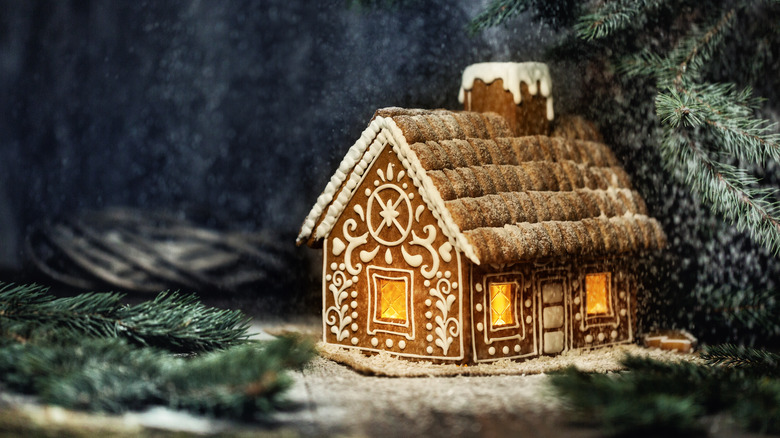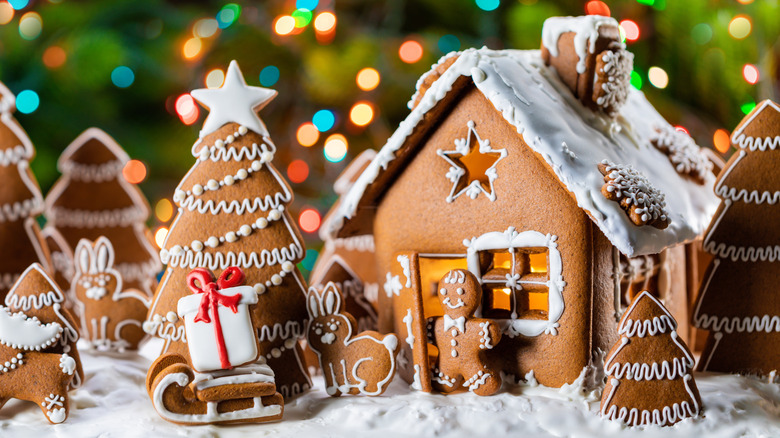The Key To Building The Sturdiest Gingerbread House
Decorating a gingerbread house is one of the most enjoyable Christmas traditions. Assembling a gingerbread house — not so much. Before you can sit down with your icing and candy to unleash your creativity (and stuff your face with gumdrops), you have to play engineer for a spell, sticking walls, roofs, and little chimney stacks together. If you've done this before, you've likely had to deal with numerous structural failures — walls tumbling down before the icing has dried, roofs caving in on themselves, gingerbread men falling flat on their faces. Many times you'll end up with a mess that more closely resembles a condemned cottage than the grand gingerbread mansions you see on the internet.
We want to save you from that fate, and the first thing you can do to elevate your holiday hut is to make your own gingerbread. Yes, it takes more time and effort than buying the ready-made kits, but it can make a huge difference, and increase your creative freedom. Popular Science likens store-bought gingerbread to cardboard, and suggests making your own but ditching the leavening agent to produce denser cookie sheets that won't expand in the oven. This type of structure isn't as appealing to the tooth though, so if you plan to eat your gingerbread house at some point, BuzzFeed notes that you can use a normal, leavened dough, then shave the expanded edges down with a microplane grater once they've baked and cooled.
Ditch the icing
Whether you make your own gingerbread or buy a kit, the real challenge begins when you have to stick the pieces together. Most people's first thought is to use royal icing for the job, but that should be saved for decorative purposes only. Popular Science points out that royal icing takes a long time to dry, and when it does, it crumbles with ease. They suggest using melted white chocolate instead, which dries into a very solid state. Because it can dry out quickly, you may need to pop the white chocolate in the microwave to re-melt it as you go, and if you want your gingerbread house to firm up fast, you can put it in the fridge to help it along.
Another alternative to using icing is to make a sort of edible glue. NPR interviewed Erica Kahn, a student at the Brown University School of Engineering, who revealed her secret recipe for the ultimate gingerbread binder. Melting marshmallows turns them into sticky cement that also adds some weight to the structure, helping to stabilize it. For spots where you need a lighter binder, Kahn recommends melted gummy bears, which form an epoxy-like glue that spreads on fairly thinly, unlike marshmallow cement or royal icing. The team at NPR put Kahn's methods to the test and built a gingerbread house so sturdy they were able to drop it from a foot in the air without causing any damage. Now that's a Christmas miracle.

